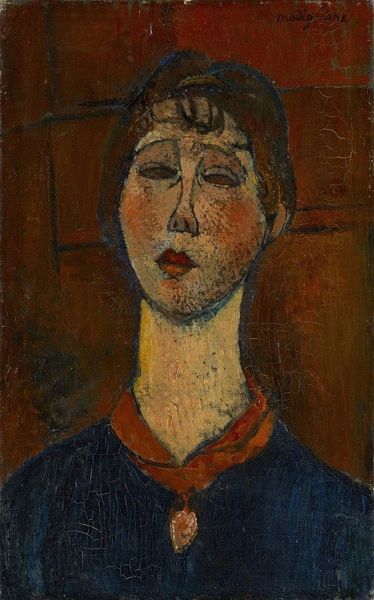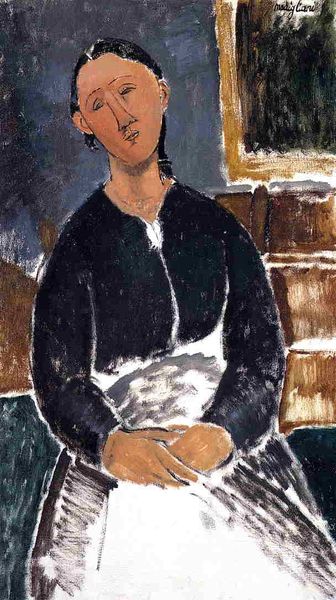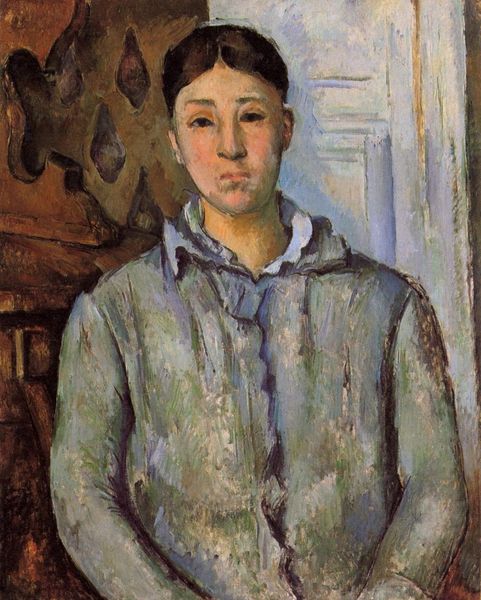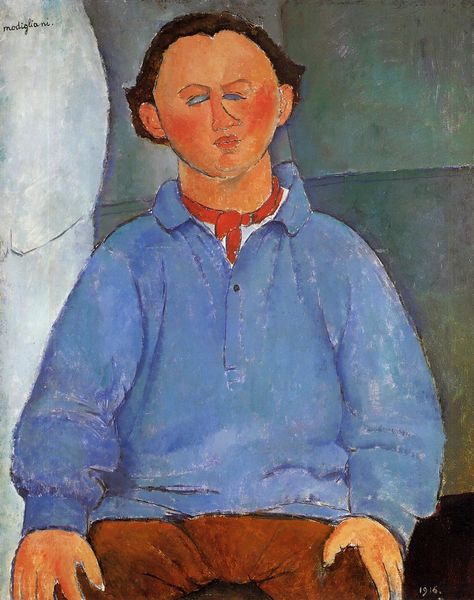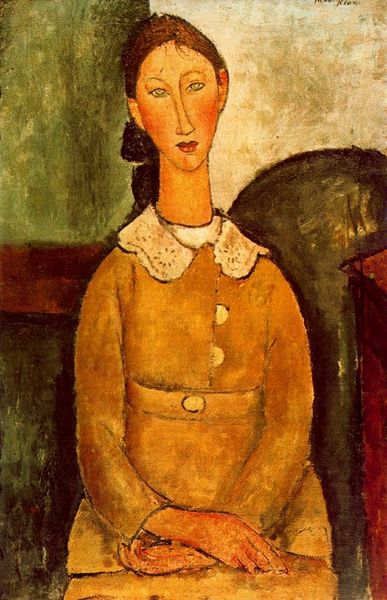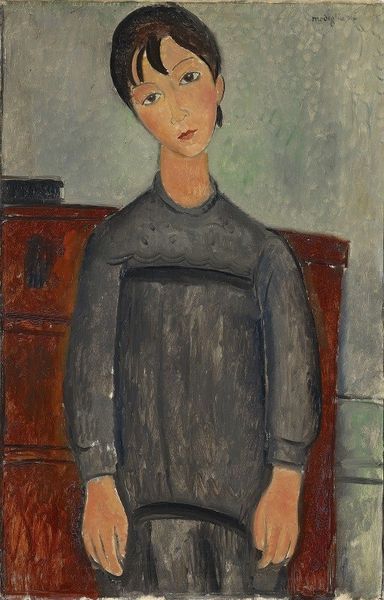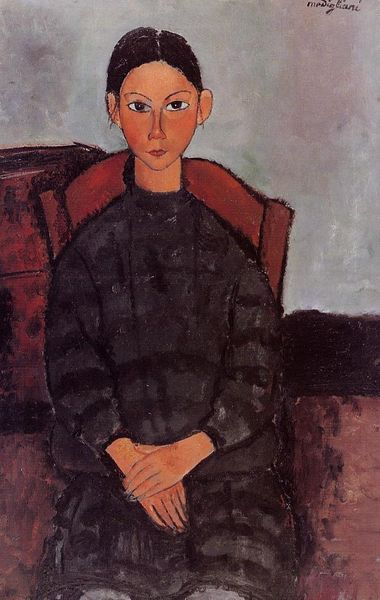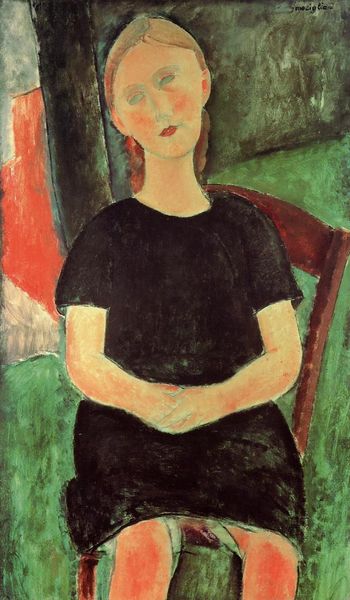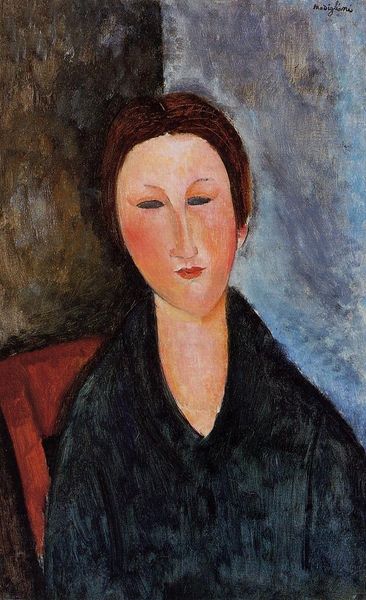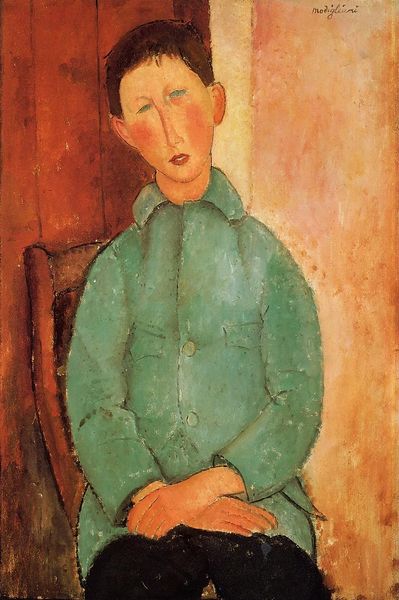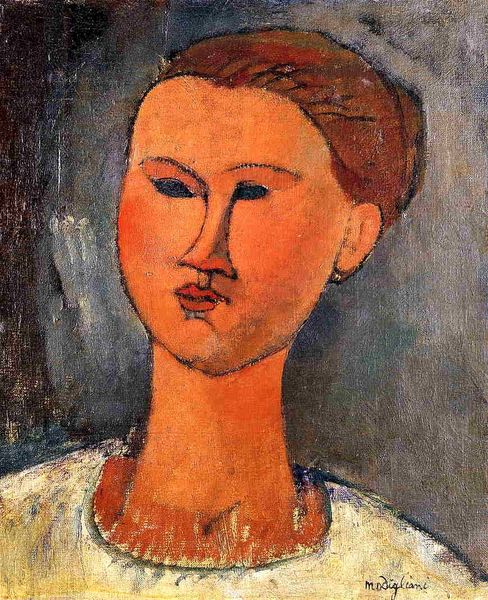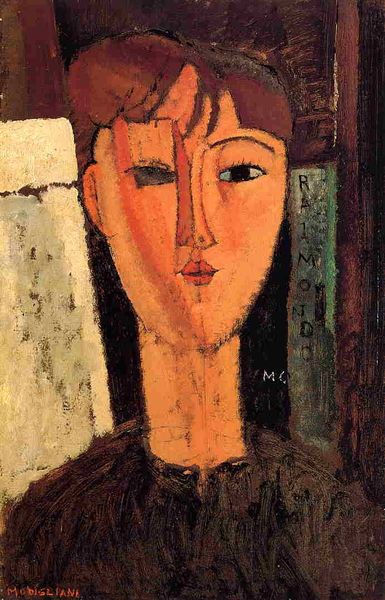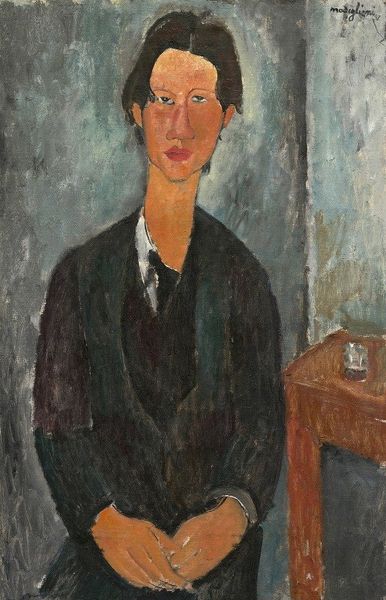
Portrait of Moise Kisling 1916
0:00
0:00
amedeomodigliani
Lille Métropole Museum of Modern, Contemporary and Outsider Art (LaM), Lille, France
oil-paint
#
portrait
#
oil-paint
#
oil painting
#
expressionism
#
italian-renaissance
#
modernism
Copyright: Public domain
Editor: So, this is Amedeo Modigliani’s “Portrait of Moise Kisling,” painted in 1916. The oil paint gives a muted effect. The subject has almond eyes, elongated features, and…an undeniable gaze. How do you interpret this work? Curator: Beyond the surface, this portrait speaks volumes about artistic communities and cultural identity during a tumultuous time. Look at the sitter, Kisling, who like Modigliani, was a Jewish émigré in Paris. Consider the School of Paris, a melting pot of artists from diverse backgrounds, many of whom, like Kisling and Modigliani, were displaced by war and prejudice. How might their shared experiences shape their artistic vision? Editor: I hadn't thought about that level of shared identity. The intense gaze now reads to me like…defiance, or resilience. Curator: Precisely! Their work challenges the established norms of representation while subtly critiquing the societal forces that marginalized them. The flattened perspective almost feels like a rejection of traditional, academic painting, doesn't it? Editor: Yes, the simplification definitely conveys that message. It almost feels subversive. Curator: Modigliani and Kisling’s choices – their styles and subject matter– can be interpreted as acts of resistance, a visual assertion of their presence and importance within a society that often sought to erase them. Editor: This has definitely opened my eyes to viewing portraiture as a dialogue about social justice! Curator: It's crucial to remember that even seemingly simple artistic choices are laden with socio-political significance and personal history. These portraits testify to a shared immigrant experience and a critique of dominant culture.
Comments
No comments
Be the first to comment and join the conversation on the ultimate creative platform.
